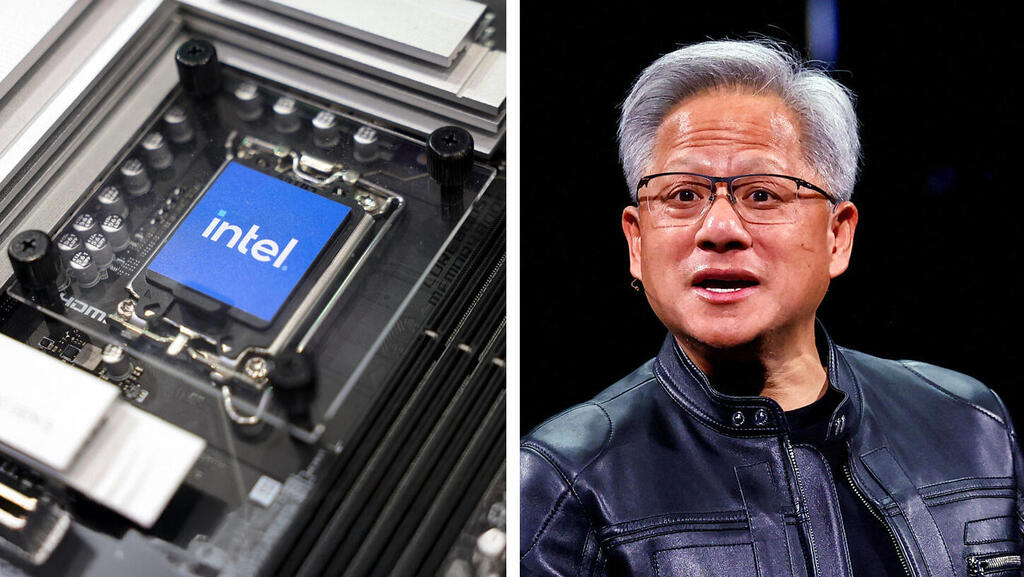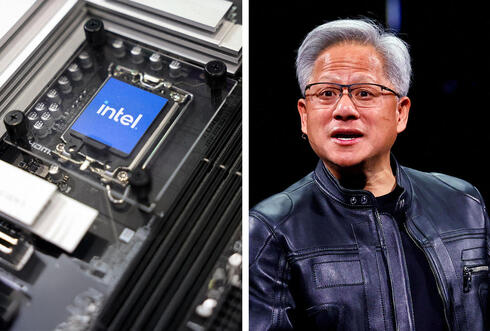
Why Nvidia’s Intel investment says more about Trump than about AI chips
A $5 billion investment that boosts Intel’s stock may reflect U.S. geopolitical priorities more than technological strategy.
Nvidia’s dramatic announcement of a $5 billion investment in Intel and the start of a collaboration between the two companies, one widely seen as the future of Silicon Valley and the other as its past, is a fascinating event, though not necessarily for what was stated in the official press release. The real story lies in what was left unsaid.
Jensen Huang on $5B Intel deal: "We will lay the foundation for the next era of computing”
Nvidia backs Intel with $5 billion investment, but stops short of foundry deal
There are two main points. First, the announcement does not address what Intel truly needs: a decision by a company of Nvidia’s stature to manufacture its AI chips in Intel’s factories. Much of Intel’s crisis stems from its inability to keep pace with technological change and produce the most advanced semiconductors. Under former CEO Pat Gelsinger, Intel even launched a dedicated foundry division to serve external customers, but so far it has failed to gain traction. The joint development of chips for data centers and PCs, the heart of the announced cooperation, is not the game changer Intel desperately seeks, nor is it particularly transformative for Nvidia.
That leads to the second, unspoken element. The deal appears to reflect not only business logic but also political pressure, possibly an explicit request from President Donald Trump for Nvidia to support Intel, thereby strengthening America’s chip industry against China. For now, Nvidia CEO Jensen Huang is trying to avoid a direct clash with Taiwan’s TSMC, the global leader in advanced chip manufacturing and Nvidia’s own production partner. But with a $5 billion check, Huang has signaled support for Intel, triggering a sharp rise in its stock, a move that aligns with Trump’s interests.
The surge has already paid off politically and financially. Last month, the U.S. government invested $8.9 billion in Intel; that stake is now worth more than $13 billion. Nvidia’s injection, in effect, has helped deliver Washington an early return on its extraordinary bet.
Beneath the headlines of soaring stocks, powerful CEOs, and artificial intelligence, this event is primarily political. It underscores how semiconductors, especially those for AI, have become the new oil. Trump frequently touts Nvidia in his foreign policy messaging, whether during his Middle East visit months ago or his recent trip to Britain, where he pledged to boost local AI innovation “through Nvidia.” The Intel investment also looks like a quid pro quo: compensation for the unusual U.S. approval granted to Nvidia to sell its advanced H20 chips to China, a decision that bears Trump’s fingerprints.
Related articles:
For Israel, there is also an important angle. Trump’s decision to champion Intel as a personal project has already funneled more than $15 billion into the company in just a few months, including a $2 billion investment from Japan’s SoftBank in August. This influx reduces pressure on Intel to impose further cost-cutting, which could have impacted its Israeli operations after several rounds of layoffs over recent years.
Intel’s rising stock and stronger balance sheet may also ease pressure on Mobileye, its Jerusalem-based subsidiary. Intel has repeatedly sold off Mobileye shares to shore up its finances, creating a drag on the company’s valuation each time. With fresh cash and a rising stock price, the overhang of future Intel selloffs may diminish, potentially stabilizing Mobileye’s share price.
